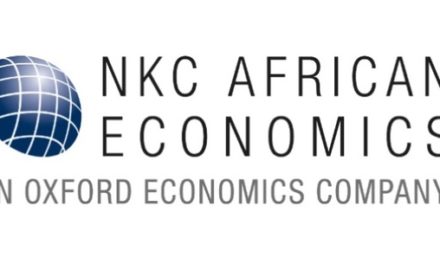
Study estimates Africa’s green hydrogen potential at US$1 trillion by 2035

By Freeman Ya Ngulu.
According to a recent study financed by the European Investment Bank (EIB) on Africa’s future role in green hydrogen, the continent has the potential to produce hydrogen worth more than US$1 trillion annually by 2035.
According to the study report, harnessing Africa’s solar energy to produce 50 million tons of green hydrogen a year by 2035 can help secure global energy supply.
The “Africa’s Extraordinary Green Hydrogen Potential” report was commissioned by the EIB in collaboration with the African Union, the International Solar Alliance, and the Government of Mauritania. It also received support from HyDeal and UCLG Africa.
It is the first in-depth examination of the viability of developing green hydrogen globally.
In light of the increasing urgency to limit global warming in line with the Paris Agreement to less than 1.5°C, the interest in green hydrogen is growing. This research considers green hydrogen as a clean energy solution and attempts to articulate a combined green hydrogen ambition for several countries in Africa represented by the Africa Green Hydrogen Alliance (AGHA). It also outlines how the green hydrogen economy stands to benefit African countries that unlock potential opportunities. The research considers only green hydrogen made by the electrolysis of water using solar and wind energy. It takes two potential scenarios from research done by McKinsey & Company on the five decarbonization pathways centered around the pace of technological progress and the level of policy enforcement.
Several African countries, particularly those in the north and south of the continent, are well positioned to be significant players in the green hydrogen space, mainly due to their high potential for renewable energy generation, particularly from solar and wind. To enable these ambitions, the Africa Green Hydrogen Alliance was formed to channel pan-African momentum on green hydrogen and to connect and augment initiatives among its members, which currently include Egypt, Kenya, Mauritania, Morocco, Namibia, and South Africa.
The Director General of the International Solar Alliance, Dr Ajay Mathur, was quoted as saying “Solar photovoltaic technology has provided us with the cheapest electricity. It will cost below €2 per kg in several African countries by 2030, much lower than the current mass assumption of €5 and a stark contrast to the $60-70 paid for an oil barrel. Thanks to this low-cost electricity and decreasing electrolyser costs, the next step is providing access to a clean fuel, cheaper than all the current fossil fuels. It will enable us to decarbonise the power sector and most hard-to-abate sectors [like] fertilisers, steel manufacturing, and refineries.”
The report states that green hydrogen could enable African countries to become more energy independent and promote zero-carbon industrialization, creating both economic growth and new jobs, as well as helping to enable and accelerate the deployment of renewable energy across the continent, to bring electricity to more communities and make it affordable.
International cross-border trade for hydrogen and its derivatives is expected to reach 100 to 180 Mt by 2050, with the majority of growth occurring between 2030 and 2050. Europe, Japan, South Korea, and Southeast Asia will potentially account for roughly 65% of this trade by 2050.
Africa offers an opportunity for several big offtakers to diversify their supply base, and could be a credible supplier to countries in Europe and Asia. AGHA members in both Northern Africa and Southern Africa could be competitively placed to capture these markets, notwithstanding supply competition from Australia and the Middle East.
Southern African countries such as Namibia and South Africa could tap into an export market of 10 to 22 Mt of hydrogen equivalent. Methanol and synthetic kerosene exports are likely to dominate from Southern Africa and could reach 13 Mt of hydrogen equivalent by 2050.
There may also be opportunities for seaborne exports of both ammonia and hydrogen from Southern Africa to Europe, which will likely want to diversify its supply to boost energy security, especially if low-cost suppliers fail to ramp up.
While hydrogen and ammonia import demand could largely be driven by Europe, Japan, and South Korea, demand for synthetic fuel is expected to be seen worldwide, with Europe, China, and India emerging as leading demand centers. There is thus a strong opportunity in synthetic fuels, with a possibility for African countries on both ends of the continent.
Synthetic fuel exports from Africa could potentially reach 13 Mt by 2050 under the Achieved Commitments scenario. AGHA’s production could reach 30 to 60 Mt by 2050 In the drive to meet rising domestic demand and capture key export opportunities, AGHA’s production volumes could reach 60 Mt of green hydrogen and its derivatives by 2050 in the Achieved Commitments scenario. This is equivalent to roughly 22% of the potential global import market, or 10% of total global hydrogen demand.











































